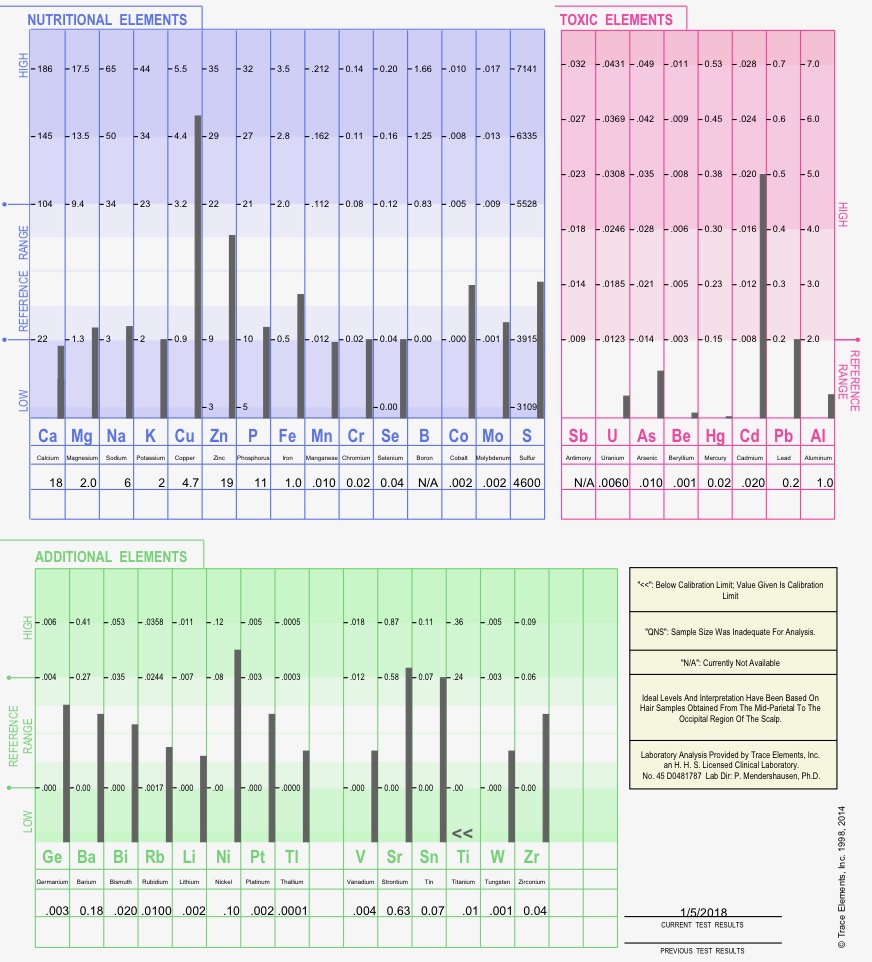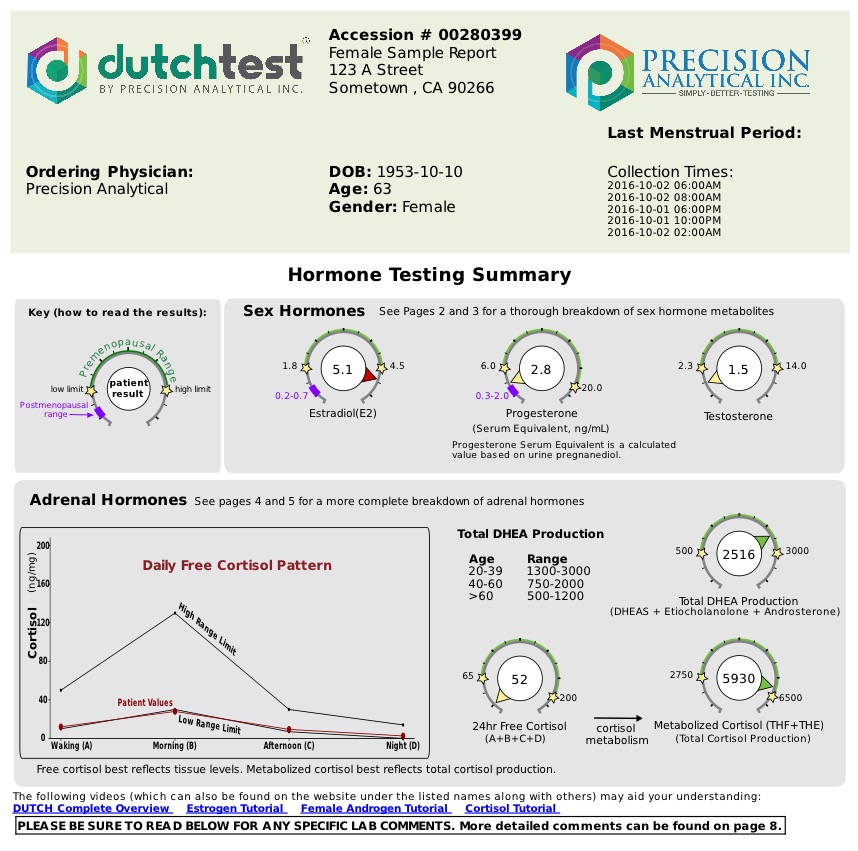I recently got a great question about why I use hair mineral testing most often and the difference between hair testing and hormone testing. I often get women asking me to run DUTCH comprehensive hormone testing, but I require hair mineral testing along with it. Let’s dig into why!
What is hair mineral testing?
A hair tissue mineral analysis (HTMA) is used to measure the mineral content of the hair. It is easy and painless. Hair mineral testing requires one hair sample that weighs about 100mg, which is about one heaping tsp of hair (depending on your hair). You take the sample from the middle-lower part of your head (ideally), which is nice because it is easy to cover. You then cut the hair sample so that it is only 1.5″ long.

This sample shows the body’s mineral status for the last 90 days, which is a massive draw for me for using this with clients. The reason is most tests are only looking at a moment in time or a span of about a day.
The other important point about hair mineral testing is that it is looking at minerals inside the cell. In comparison, blood tests look at nutrients outside of the cell. It helps get a look inside the cell because it tells us what nutrients you are using a lot of if you’re moving nutrients out of the cell that can be harmful (like calcium), and which nutrients you are deficient in. It also can detect heavy metal toxicity. The Environmental Protection Agency (EPA) concluded that using human hair testing may be more appropriate than blood or urine samples for evaluating trace minerals.
What About Hormone Testing?
When it comes to hormone testing, I recommend the DUTCH complete test. It’s a urine sample that allows us to view metabolites of hormones and see what pathways they are going down in the body, vs. blood hormone testing, which only shows us the primary hormone levels.

The DUTCH hormone test measures your sex hormones (estrogens, progesterone, testosterone, and other androgens) as well as stress hormones (free cortisol, metabolized cortisol, DHEA) and even a few organic acids and neurotransmitters. You get a lot of information, but many of the results make me want to know more about that person’s mineral levels. For example, if someone has poor estrogen detoxification, I would want to see their magnesium, copper, and heavy metal levels since these impact estrogen detox.
Another example is when it comes to cortisol. If metabolized cortisol is low and free cortisol is high, that is a common issue when the thyroid is sluggish. Inadequate thyroid hormone or difficulty getting into the cell and slowing down the clearance of free cortisol disrupts how our bodies make and process cortisol. Overall, both tests are helpful, but when it comes to making nutrition, lifestyle, and supplement changes, I think hair mineral testing is the winner for tests to prioritize.
Why do I require hair mineral testing for my clients?
I look at minerals because is they tell us the why. Minerals are like spark plugs and kick-off thousands of important body reactions, so seeing levels tells us a lot about what is happening. Hormone tests often tell you if a hormone is high or low, which can be helpful to an extent, but a hair mineral test gives more insight into why that hormone is high or low. For example, if estradiol (the most potent form of estrogen) is high on your hair test and your progesterone is low, this is common when a thyroid issue is present. We need enough thyroid hormone to convert pregnenolone (our primary hormone) to progesterone. You can do a thyroid blood test, but that doesn’t tell you what’s happening on a cellular level, only how much hormone is being produced. The hair mineral test will show us if anything is keeping your thyroid hormone from getting inside the cell and doing its job. If you’ve been getting my newsletters or following my work for a while, you likely know how important thyroid health is for hormones and overall health.
Lastly, mineral testing is much more affordable than something like a DUTCH hormone test. I do hair testing when I start working with someone and then again when they finish their protocol. This is also what I’m doing with my Healthy Period Protocol ladies. Retesting allows us to see how things have shifted in the last three months and plan where to go from there. This can cost as little as $150-200 for testing for two hair tests. DUTCH hormone testing costs double that for one test, which can be limiting, and again I would still want to see a hair test for most people—more on indicators that a hair test would be helpful based on DUTCH results below.
When suspecting thyroid dysfunction, an evaluation of minerals is necessary. Minerals, like calcium, magnesium, sodium, and potassium, play a role in the balancing of hormones. If you choose to do a hormone test, mineral testing should also be done in conjunction. I go into great detail about the importance of certain minerals to hormone health in my blog series on minerals. You can also learn more about mineral testing in our free training on optimizing hormones with mineral balance! We walk you through mineral foundations and three steps to addressing mineral imbalances, including how to test your own. PLUS, you’ll get a free copy of our Mineral Imbalance Cheat Sheet, which breaks down common mineral imbalances and symptoms that typically accompany them.
